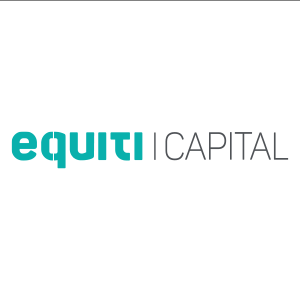Bitcoin is trading at $50,441 at the time of writing this piece. The asset is up 292% year-to-date, but it has not seen this climb without notable volatility. Bitcoin has garnered a reputation for regular 20% swings. Still, it has found a place on corporate balance sheets, and in mainstream discourse. An asset that was once treated as a fringe topic in geeky internet forums is now being discussed as many things; as a currency, an asset, and ‘digital gold’. This article aims to explore the fundamental properties of bitcoin, and how they stack up to those of gold.
Figure 1: Bitcoin and gold vs USD index over the last 5 years
Many on Wall Street have taken the view that the rise of bitcoin is a sign of another speculative bubble. However, a growing crowd of investors have claimed that it is an ideal reflation trade. The argument has gained traction amid a pandemic era of secular quantitative easing and record low interest rates across the globe. As US 10-year bond yields have risen so has the price of bitcoin on fears that aggressive monetary policy will devalue the USD, and the Fiat money system more broadly.
Figure 2: Bitcoin compared to the 10-year treasury index YTD
Of course, this argument has existed for some time among gold investors. So what properties do bitcoin and gold both share?
Where bitcoin and gold agree
Both assets tend to outperform around inflationary concerns. Gold has often been known to move counter to risk-assets. As global events loomed over investors, we have historically seen equities sell off while gold rallied. However, during the Coronavirus pandemic this relationship broke. Gold sold off alongside equities and continued to sell off even as equities picked up once again. It has since reversed this down-trend. We find that this may be due to many investors’ scepticism with the bullish run experienced by the stock market. With longer term inflation fears mounting as bond yields marched back upwards, gold has gained notable strength since March of this year.
The conversation around bitcoin has experienced much the same. Between December and January, the asset garnered unprecedented institutional interest. Aside from banks and payment companies, we saw an increase in corporate executives (famously, Michael Saylor of publicly traded company, MicroStrategy) touting the benefits of bitcoin as a reflation trade, and they began to load it on their balance sheets.
Bitcoin and gold are both further praised by their proponents for being independent of the state. They exist outside the Fiat money system, and no one entity has complete control over either asset. This decentralised form of ownership is seen by investors as a safety net against global instability.
Where bitcoin differs
Bitcoin is no stranger to comparisons with gold, and even to Fiat money as a means of exchange. Perhaps where it differs the most is in its programmability. The network was hardcoded with an absolute limit of 21 million bitcoins, meaning no more can ever be brought into existence. It was also programmed to halve the reward amount for miners every 4 years, making it twice as hard to produce (and twice as scarce) in each cycle. This predictable supply schedule makes the effective monetary policy of bitcoin easy to forecast, unlike the supply schedule of gold, which can increase or decrease according to aggregate demand. Bitcoin’s inelastic supply uniquely makes its value totally dependent on demand.
Figure 3: Supply schedule of bitcoin
Another key difference from gold is in its delivery. Bitcoin is transmissible via digital networks, meaning it can be delivered across borders within moments. Ownership is verified by a network of participants, and the ledger of all transactions is kept public. While gold requires physical delivery and storage, bitcoins are stored via a user’s private key, which is uniquely encoded to maintain the integrity of the owner’s value.
Proponents of gold enjoy the tangible properties of the asset, which allow them to safeguard it physically. They argue that this makes it more secure amid geopolitical instability. Equally, bitcoiners enjoy the freedom to access their assets from anywhere, using only their private key and a stable internet connection to do so.
Lastly, bitcoin is unique from gold in that it can be used for regular transactions. As more merchants and payment providers accept bitcoin, investors argue that this will only grow the network and grant more people global access to the asset, which might increase its value in turn.
Bitcoin or gold?
There is no objective answer, and the truth will likely depend on the investor’s risk appetite. While gold has recently seen some volatility during the Coronavirus pandemic, it did not come close to the price swings experienced by bitcoin.
Gold has the historical proof of thousands of years of use, while bitcoin is still less than 20 years old. Gold is a physical asset requiring physical delivery, while bitcoin is transmitted digitally. Gold has use cases in design and jewellery, while bitcoin has monetary properties that allow for it to be used as a means of exchange.
In either case, both assets are viewed as a store of value, and the arguments for both centre around a supposed devaluation of equities and Fiat money due to inflation fears.
‘’This material is provided for informational purposes only and does not constitute financial advice, investment advice, trading advice or any other advice or recommendation of any sort offered or endorsed by Equiti Capital. This material is not, and is not intended to be, a “research report”, “investment research” or “independent research” as may be defined in applicable laws and regulations worldwide. Please see the full disclaimer here: https://www.equiticapital.co.uk/media/11057/disclaimer.pdf ’’
Author: By Hamza Bilbeisi, Junior Trader, Equiti Capital
Hamza is a Junior Trader at Equiti Capital. Through trading commodities and futures, he has developed an interest in blockchain technologies and their implications on financial markets. He is based in London.




